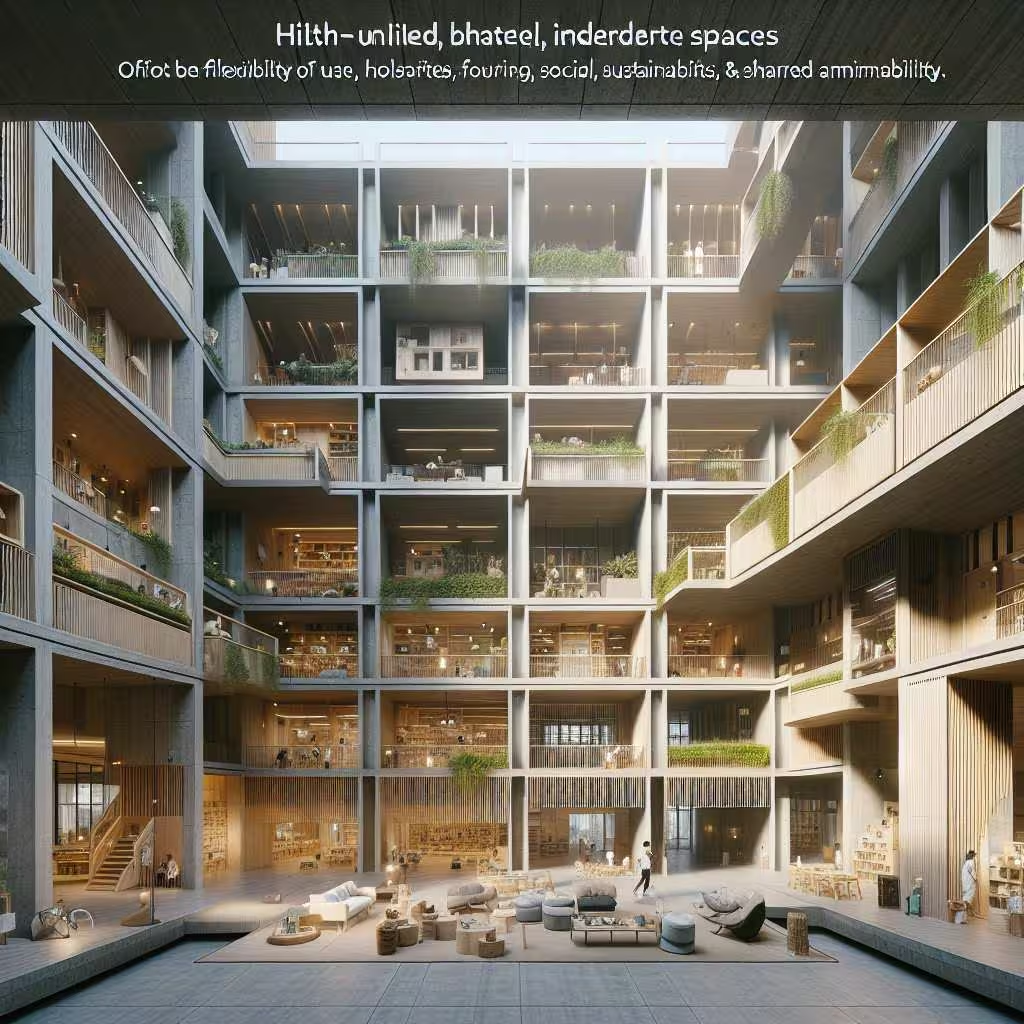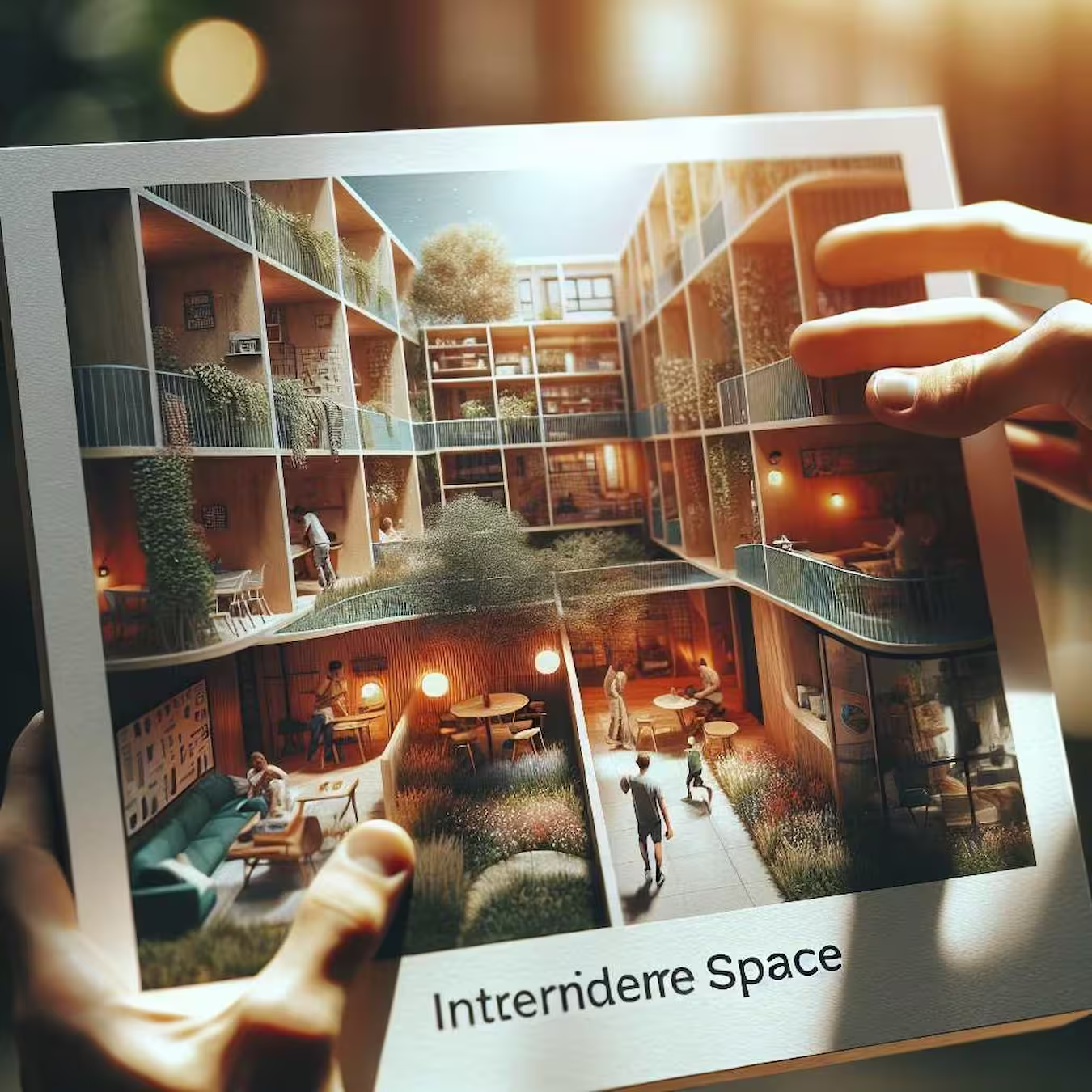As someone deeply involved in the built environment, I’ve seen firsthand how intermediate spaces can transform our living and working experiences. These often-overlooked areas between public and private realms hold immense potential for fostering collaboration, sustainability, and community. At Curvspace, we’re passionate about unlocking this potential to create more livable, efficient, and connected spaces for everyone. Let’s explore how intermediate spaces can bring together diverse stakeholders to reshape our shared environment for the better.
Reader Disclosure
Jump to:
Understanding Intermediate Spaces
Intermediate spaces are the transitional areas that connect different parts of a building or link indoor and outdoor environments. These spaces include hallways, lobbies, courtyards, balconies, and shared amenities. Often underutilized, they present unique opportunities for enhancing the overall quality of life for building occupants and the surrounding community.
The Importance of Intermediate Spaces
Intermediate spaces play a crucial role in:
- Facilitating social interactions
- Improving building efficiency
- Enhancing safety and security
- Promoting sustainability
- Creating a sense of community
These areas serve as buffer zones between public and private spaces, offering flexibility in use and fostering a sense of shared ownership among stakeholders.
Stakeholder Benefits and Collaboration Opportunities
Homeowners
For homeowners, intermediate spaces offer numerous advantages:
- Increased property value
- Enhanced living experience
- Improved energy efficiency
- Stronger community connections
Collaboration opportunities:
- Participate in design workshops for shared spaces
- Contribute to community gardens or green spaces
- Organize social events in common areas
Tenants
Tenants can benefit from intermediate spaces through:
- Access to additional amenities
- Improved social connections
- Enhanced work-from-home opportunities
- Potential for reduced utility costs
Collaboration opportunities:
- Propose and manage shared resources (e.g., tool libraries, coworking spaces)
- Participate in community-building activities
- Contribute to space optimization ideas
Landlords
Landlords stand to gain from investing in intermediate spaces:
- Increased property attractiveness
- Higher tenant retention rates
- Potential for premium rents
- Reduced maintenance costs
Collaboration opportunities:
- Engage tenants in space design and improvement projects
- Implement smart building technologies for efficient space management
- Partner with local businesses to provide services in shared spaces
Workplace Providers
For workplace providers, intermediate spaces can:
- Enhance employee satisfaction and productivity
- Attract and retain top talent
- Improve space utilization
- Reduce overhead costs
Collaboration opportunities:
- Create flexible work environments that cater to diverse needs
- Implement activity-based working concepts
- Partner with local amenities to extend the workplace experience
Employees
Employees benefit from well-designed intermediate spaces through:
- Improved work-life balance
- Enhanced collaboration opportunities
- Access to diverse work settings
- Increased job satisfaction
Collaboration opportunities:
- Participate in workplace design committees
- Propose and lead initiatives for shared spaces
- Contribute to sustainability efforts in the workplace

Collaborative Approaches to Improving Intermediate Spaces
1. Participatory Design
Involving all stakeholders in the design process ensures that intermediate spaces meet diverse needs and foster a sense of ownership. This approach can include:
- Design charrettes and workshops
- Virtual reality walkthroughs
- Prototype testing and feedback sessions
2. Flexible Use Agreements
Developing flexible use agreements for intermediate spaces allows for adaptability and maximizes utility. This can involve:
- Time-sharing arrangements
- Multi-purpose space designs
- Pop-up amenities and services
3. Smart Building Technologies
Implementing smart technologies can optimize the use of intermediate spaces and improve overall building performance1. Key technologies include:
- Occupancy sensors
- Climate control systems
- Access management solutions
4. Sustainability Initiatives
Collaborative efforts to enhance sustainability in intermediate spaces can lead to significant environmental and economic benefits2. Initiatives may include:
- Green roof installations
- Rainwater harvesting systems
- Energy-efficient lighting and HVAC upgrades
5. Community Programming
Engaging stakeholders through community programming can activate intermediate spaces and foster social connections. Examples include:
- Art installations and performances
- Wellness classes and workshops
- Networking events and skill-sharing sessions
Case Studies: Successful Intermediate Space Collaborations
1. The Collective Old Oak, London
This co-living development demonstrates how intermediate spaces can foster community and enhance living experiences. The project features:
- Shared kitchens and dining areas
- Coworking spaces
- Rooftop gardens and social areas
Stakeholders collaborated on programming and space utilization, resulting in high occupancy rates and resident satisfaction3.
2. WeWork and Airbnb Partnership
This innovative collaboration between WeWork and Airbnb showcases how intermediate spaces can blur the lines between work and travel:
- Airbnb guests gain access to WeWork’s coworking spaces
- WeWork members can book Airbnb accommodations for business travel
- Shared spaces are designed to accommodate both working and living needs
3. The Edge, Amsterdam
Dubbed the “smartest building in the world,” The Edge exemplifies how technology can optimize intermediate spaces:
- App-based workspace booking system
- Smart lighting and climate control
- Data-driven space utilization analysis
The building’s design and technology have led to increased employee satisfaction and significant energy savings.
Overcoming Challenges in Intermediate Space Collaboration
- Privacy concerns
- Liability and insurance issues
- Maintenance and cleanliness responsibilities
- Balancing diverse stakeholder needs
- Initial investment costs
To address these challenges:
- Develop clear guidelines and policies for shared space use
- Implement secure access control systems
- Create fair cost-sharing models
- Establish regular stakeholder feedback mechanisms
- Demonstrate long-term ROI through data-driven analysis
The Future of Intermediate Spaces
As we look ahead, several trends are shaping the future of intermediate spaces:
- Increased focus on health and wellness
- Integration of biophilic design principles
- Adoption of augmented and virtual reality technologies
- Growth of the sharing economy
- Emphasis on resilience and adaptability in building design
These trends present exciting opportunities for stakeholders to collaborate on creating more vibrant, efficient, and sustainable built environments.

People Also Ask
How do intermediate spaces improve building efficiency?
Intermediate spaces improve building efficiency by optimizing space utilization, reducing energy consumption through smart design, and creating multi-functional areas that serve various purposes throughout the day.
What are some examples of intermediate spaces in residential buildings?
Examples include lobbies, shared rooftops, communal gardens, coworking areas, fitness centers, and multi-purpose rooms that can be used for various activities and events.
How can landlords justify the investment in intermediate spaces?
Landlords can justify investments in intermediate spaces through increased property value, higher tenant satisfaction and retention rates, potential for premium rents, and reduced operating costs due to improved building efficiency.
Conclusion
Intermediate spaces offer a unique opportunity for stakeholders to collaborate on improving our shared built environment. By working together, homeowners, tenants, landlords, workplace providers, and employees can create more vibrant, efficient, and sustainable spaces that enhance quality of life and foster stronger communities. As we continue to innovate and adapt to changing needs, the potential of intermediate spaces to transform our built environment is truly exciting.
Show & Tell
We’d love to hear your thoughts about these ideas! Simply click the link to head over to your favorite platform and add your comments about this post there. We’d like to know about your insights, questions, or just saying hi.
Disclosure
Our content is reader-supported. This means if you click on some of our links, then we may earn a commission. Commissions do not affect our editor’s opinions or evaluations. Learn more about our editorial process.

About the Editorial Staff
The Curvspace editorial team comprises a diverse group of experts on intermediate and threshold spaces in homes and workplaces. Architects and interior designers, civil engineers and artists, environmental and behavioral psychologists, sociologists and anthropologists. All collaborate to create helpful content, that explores the full potential of these often-overlooked areas to enhance our daily lives.


